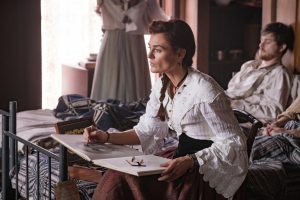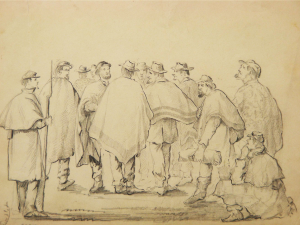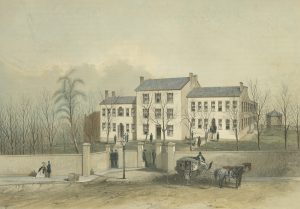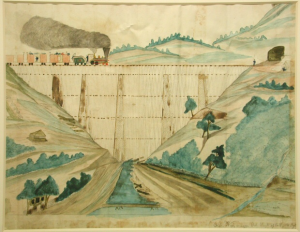By Rob DeHart
Tennessee State Museum

The second season of Mercy Street introduces the character of French anatomy artist Lisette Beaufort. Her primary job at the hospital is to create illustrations of patient wounds and medical procedures for publication in medical instruction books, but she also records poignant moments for the people of Mansion House. This character reminds us how important sketch artists were during the Civil War and that the advent of photography did not decrease the demand for them.
Photography was very much in its infancy in 1860. Studio portraits only became practical and affordable in the mid-1840s with the improvement of the daguerreotype, which recorded light on a chemically coated copper plate. These photographs required painfully long exposure times for the subjects, and the expensive equipment and toxic chemicals kept photography a commercial enterprise (home photography technology did not evolve until the late-19th century). Also, these photographs were one-of-a-kind and could not be easily reproduced.
By the mid-1850s, the advent of wet plate photography upgraded the process and reduced exposure times. As the “wet plate” label suggests, this process required that the plates be developed quickly, as a result photographers needed to have chemicals nearby to create a successful image. Ambrotypes (images on glass) and tintypes (images on iron) followed, but it was the carte de visite that really thrust photography into mainstream America. The carte de visite, which is French for “visiting card,” was printed on small paper cards and was affordable for most people. The prints could be mailed without fear of breaking, and multiple copies could be produced. Most surviving Civil War-era photographs in the Tennessee State Museum’s collection are carte de visites or tintypes.
Despite these advances, the whole nature of taking a photograph during this time was very cumbersome, thus most photographs were produced in studios. Photographers who shot streetscapes and battlefields, such as the famous war photographer Matthew Brady, traveled with portable darkrooms to develop the images on site. Unlike today when a scene can be captured quickly by whipping out a cell phone, Civil War photography was not adept at capturing fleeting moments and it was mainly through artists’ sketches that the general public saw the Civil War.

The Tennessee State Museum’s collection of Civil War sketches generally falls into two categories: illustrations produced by professional artists for print media and soldier art. The drawing below was created by Alexander Simplot, who covered the Civil War for Harper’s Weekly Magazine. Simplot traveled with the Union Army and was present when Confederates surrendered at Fort Donelson northwest of Nashville on February 16, 1862. This drawing presumably depicts two Union soldiers guarding 10 captured Confederate soldiers.

Another example is this color lithograph depicting the Nashville Female Academy when it was being used as a barracks for the 51st Ohio Volunteers during Union Army occupation. The lithograph was created from a soldier’s drawing and provides one of the best images of this elite Nashville educational institution that was located close to where the downtown YMCA is today.
The museum recently acquired this excellent piece of soldier art depicting the railroad bridge above Running Water Creek in Whiteside Valley, Marion County, near Chattanooga. It was drawn by Charles Waizenegger, a soldier with the 75th Regiment Pennsylvania Infantry. In many cases, drawings like this fill important gaps of the Civil War landscape where photographers failed to tread. Fortunately, soldiers and professional artists used their talents in Civil War Tennessee to record some important moments and landscapes.
